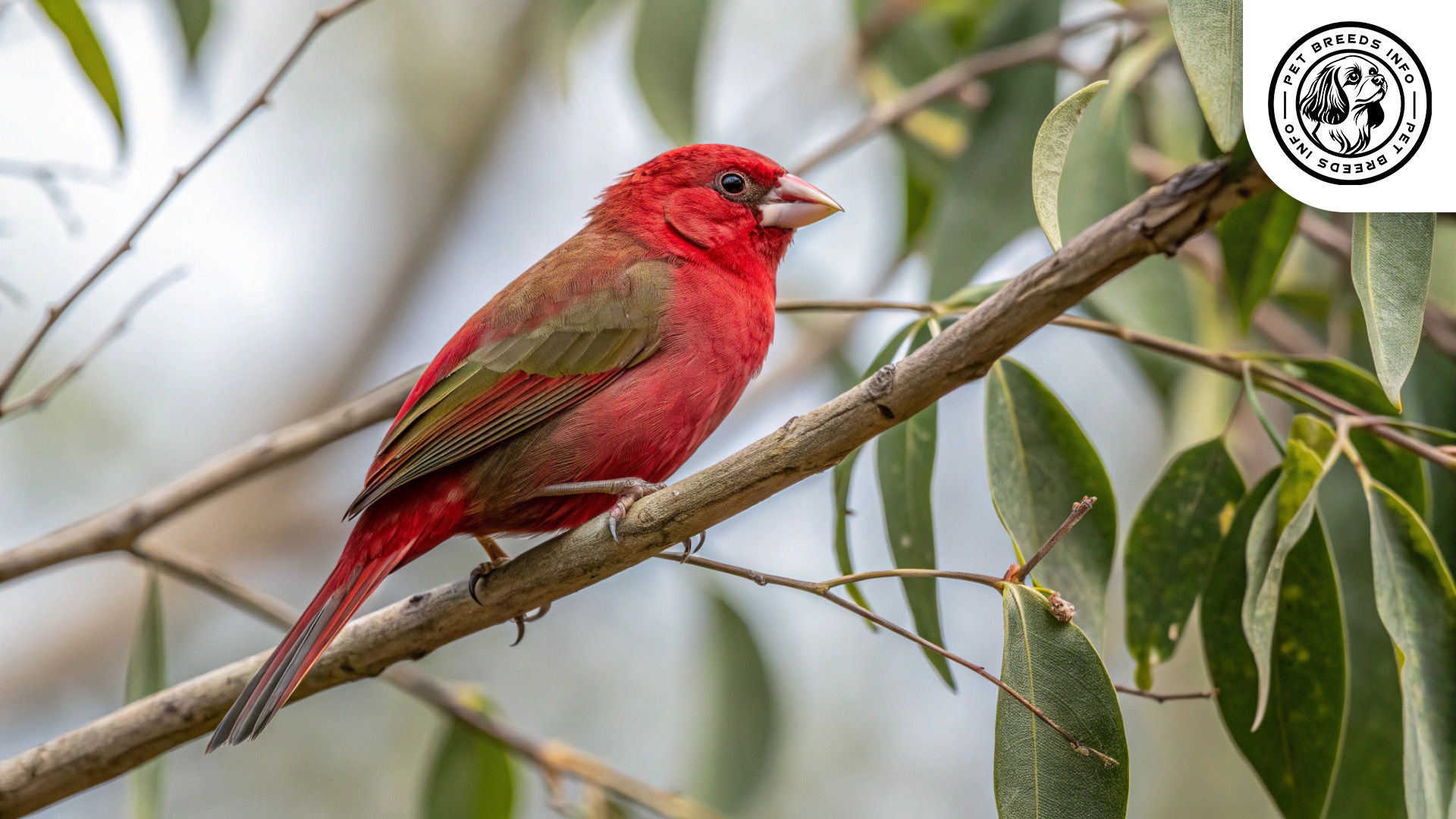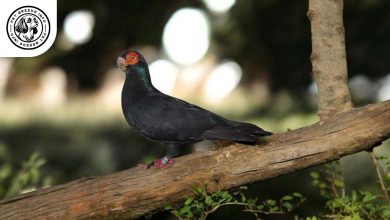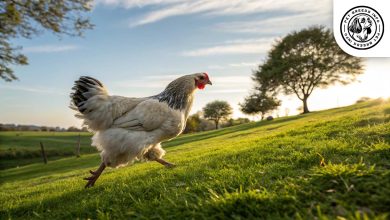Crimson Finch Bird: Personality, Lifespan, Food & Care
General Introduction of the Breed
The Crimson Finch (Neochmia phaeton) is a strikingly colorful bird species belonging to the Estrildidae family. This species is also known as the Blood Finch due to its deep red coloration.
Native to northern Australia and parts of New Guinea, the Crimson Finch is commonly found near wetlands, grasslands, and dense shrubbery. It has been admired for its beauty and has been selectively bred in aviculture for several generations.
Table of Contents
| Common Name | Crimson Finch |
| Scientific Name | Neochmia phaeton |
| Origin | Northern Australia, New Guinea |
| Size | Small (12–14 cm long) |
| Lifespan | 5 to 8 years |
| Colors | Deep red with black markings (males); duller red/brown (females) |
| Talking Ability | Very low (chirping, not mimicry) |
| Noise Level | Moderate (frequent chirping) |
| Social Behavior | Energetic, territorial, bonds with mate |
Physical Characteristics
The Crimson Finch is a small bird with an average length of about 12-14 cm. Males are typically more vibrant in color, displaying brilliant red plumage with black markings on the belly, wings, and tail. Females are slightly duller in color, with brownish or reddish hues.
They have small, rounded heads with striking black eyes and short, conical beaks that are perfect for seed-cracking. Their tails are long and pointed, distinguishing them from other finch species.
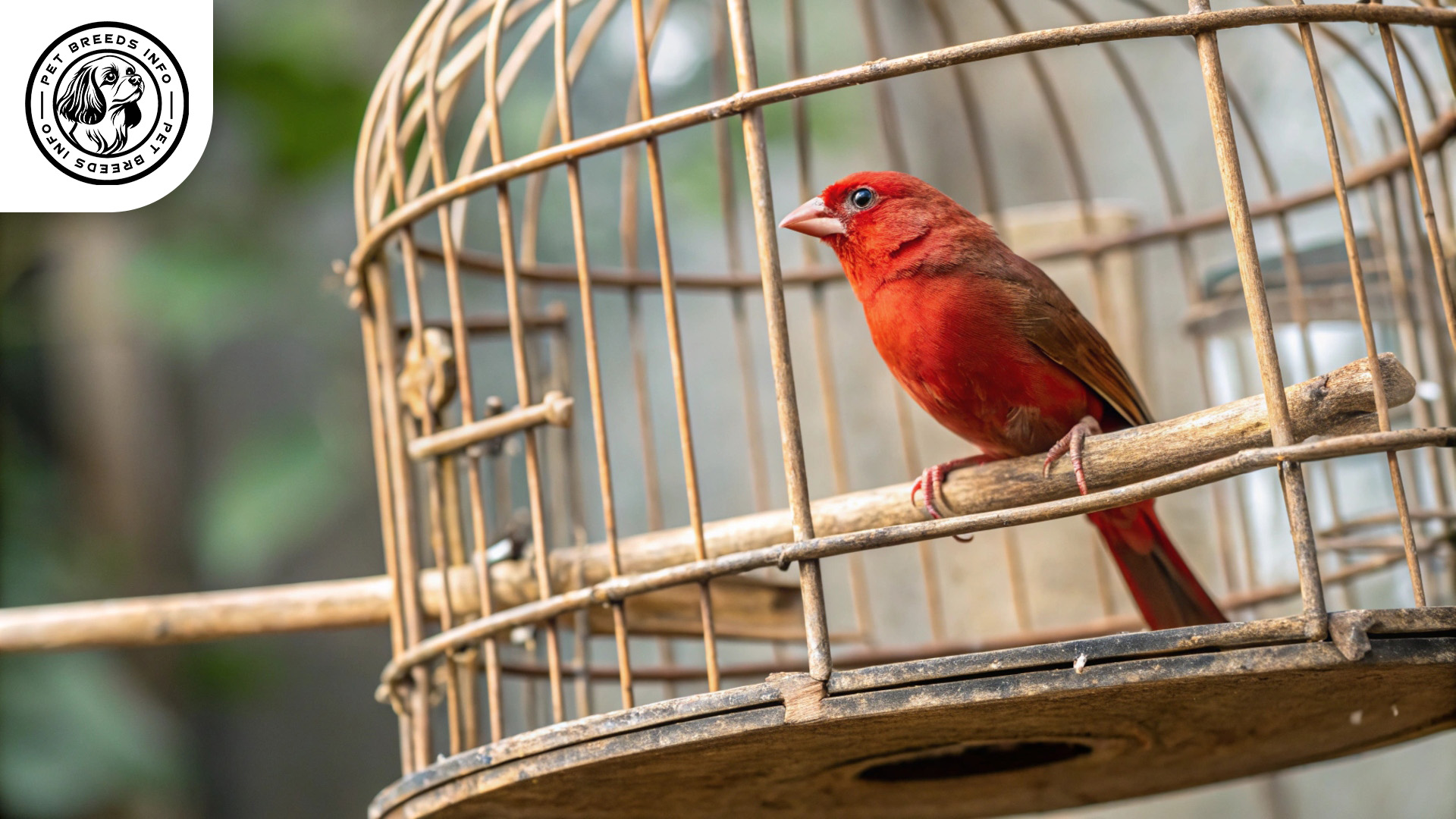
Personality and Temperament
Crimson Finches are intelligent and inquisitive birds, making them an engaging choice for bird enthusiasts. They have a high energy level and require ample space to fly and explore.
They form strong bonds with their mates and can be territorial, especially during breeding seasons. While they are social, some individuals may display aggressive behaviors toward other finches if space is limited.
These birds are highly active and love to perch, chirp, and interact with their surroundings, making them entertaining companions for experienced bird owners.
Care and Maintenance Requirements
Crimson Finches require a well-ventilated, spacious aviary or cage, ideally with ample perches and greenery to mimic their natural habitat. A minimum cage size of 24x16x16 inches is recommended for a pair.
They thrive best in warm temperatures and can be sensitive to extreme cold. Keeping them in a stable, comfortable environment is essential.
Grooming needs are minimal. Regular cleaning of their cage, fresh water supply, and trimming of overgrown nails if necessary will suffice.
Read More: Brecon Buff Goose
Diet and Nutrition
These finches primarily consume a diet of seeds, including millet, canary seed, and grass seeds. A high-quality finch seed mix is ideal.
Fresh fruits, vegetables, and occasional live foods like mealworms provide essential nutrients and should be included in their diet.
Foods to avoid include avocado, chocolate, caffeine, and salty or processed foods, as they can be toxic to birds.
Feeding should consist of small portions throughout the day, ensuring fresh food and water are always available.
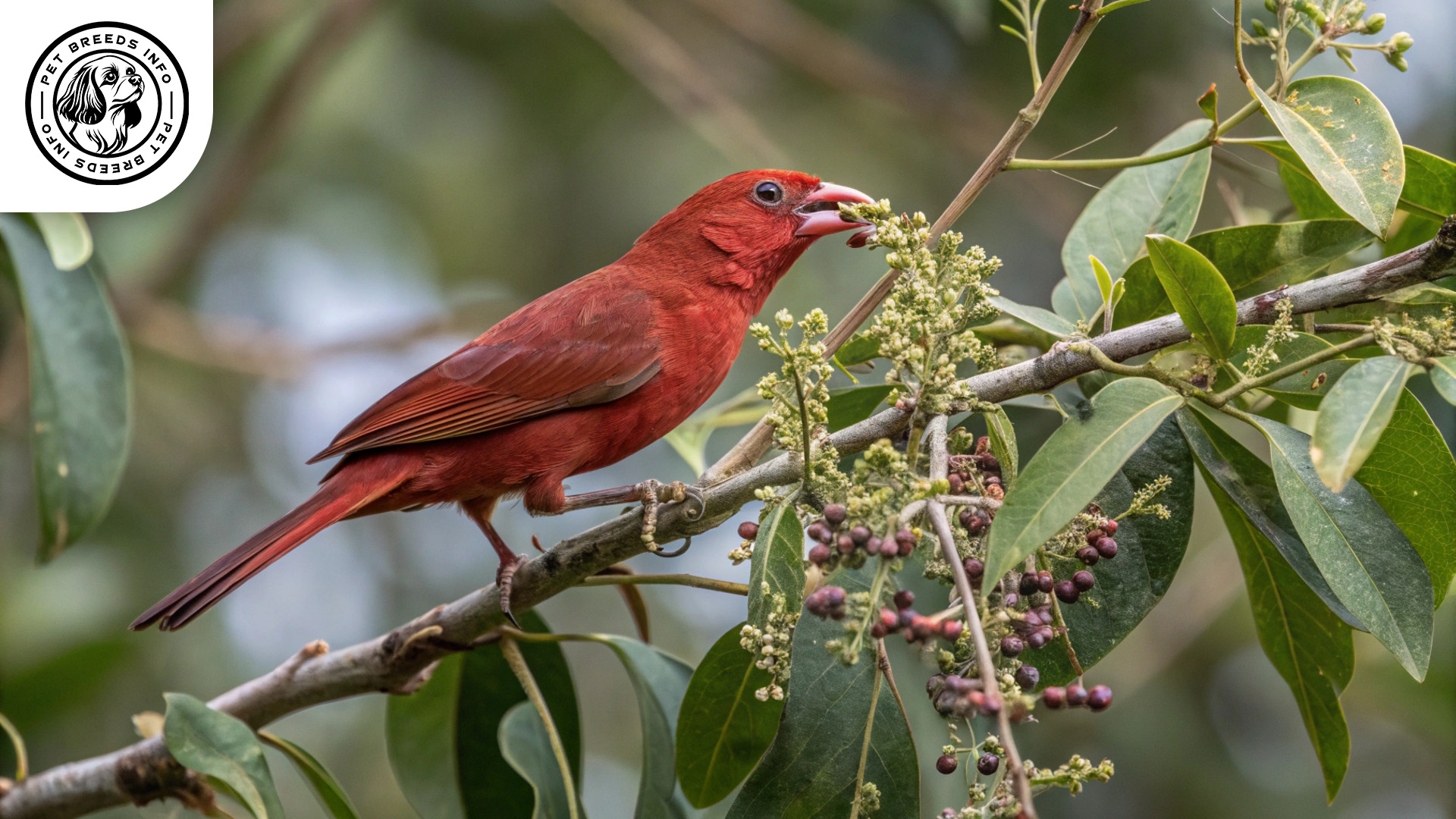
Health and Common Medical Issues
Crimson Finches are generally hardy birds, but they can be prone to respiratory infections, mites, and nutritional deficiencies if not properly cared for.
Common health issues include feather plucking, air sac mites, and egg-binding in females. Regular veterinary check-ups can help detect and prevent potential health problems.
With proper care, these birds have an average lifespan of 5-8 years.
Training and Behavior Management
These birds are not typically trained for tricks, but they can become accustomed to human interaction if handled from a young age.
Providing a stimulating environment with toys and social interaction can help manage behavioral issues such as aggression or boredom.
Positive reinforcement, such as offering treats or gentle handling, helps them feel comfortable in their surroundings.
Read More: Black East Indian Duck
Interaction with Other Animals and Humans
Crimson Finches can be territorial and may not always get along with more passive bird species. It is recommended to house them with other finches that have similar energetic behavior.
If raised in captivity alongside other birds, they may become more social and tolerant. However, interactions with larger, predatory pets should be avoided.
They are better suited for bird enthusiasts or experienced pet owners who understand their social dynamics and space needs.
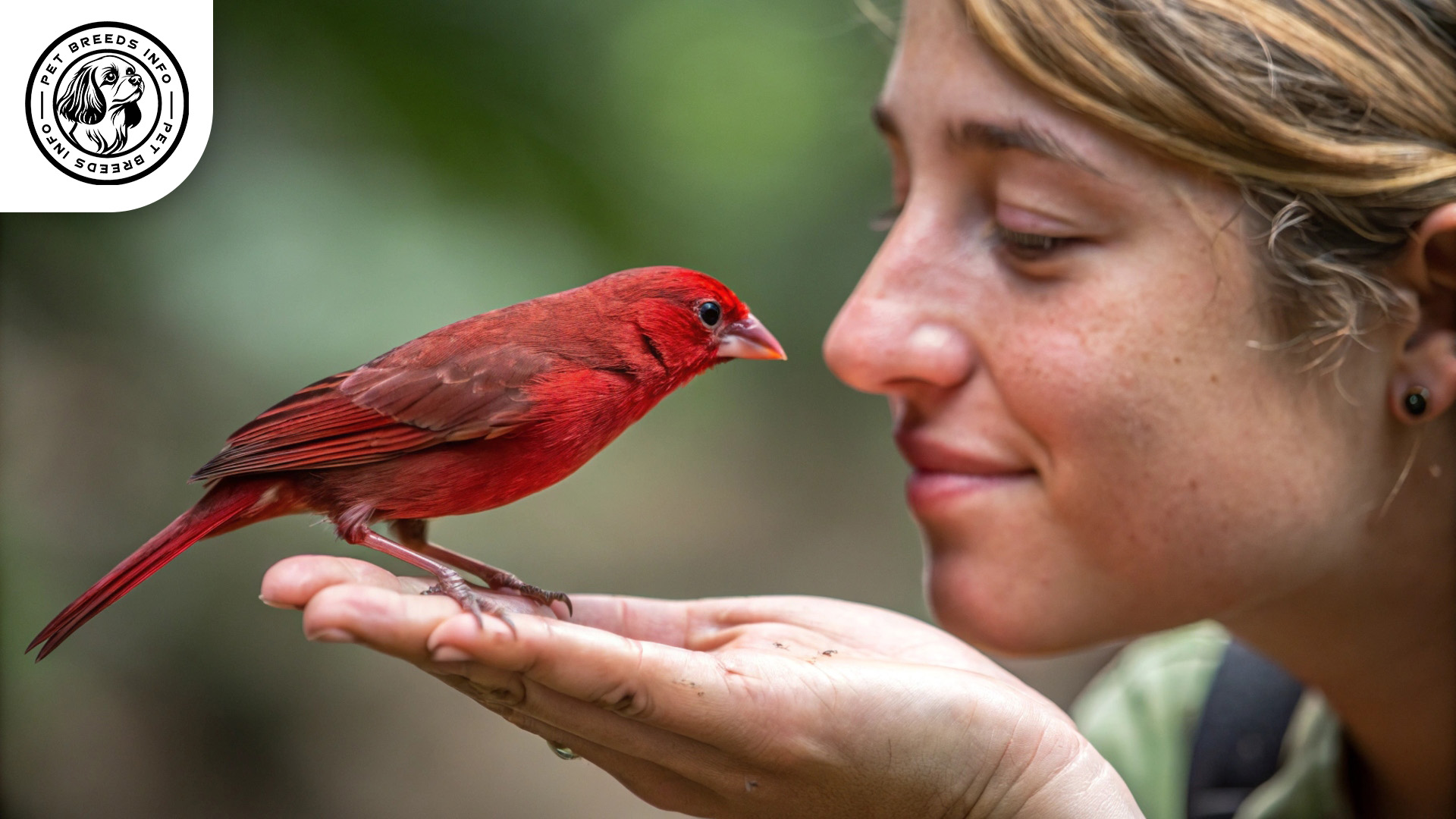
Price and Availability
The price of a Crimson Finch varies based on location, breeder reputation, and bird quality. On average, they range from $50 to $150 per bird.
When purchasing, it is essential to choose reputable breeders or adopt from verified avian adoption centers. Ethical sourcing ensures a healthy bird with no prior health defects.
Potential owners should consider their maintenance requirements and space needs before acquiring one.
Read More: Cactus Conure Bird
Conclusion and Final Thoughts
The Crimson Finch is a captivating and lively pet bird well-suited for experienced avian enthusiasts. While not ideal for first-time bird owners, those who understand and are willing to meet its care requirements will find the Crimson Finch to be an excellent companion.
A spacious living area, a well-balanced diet, and regular health check-ups are key to maintaining a happy and thriving Crimson Finch. If you are looking for a vibrant and active avian companion, this finch may be the perfect choice for you.
Where are Crimson Finches from?
They are native to northern Australia and parts of New Guinea, especially near wetlands and grasslands.
How big are Crimson Finches?
They grow to about 12–14 cm in length and have long, pointed tails and conical beaks.
Do Crimson Finches need a lot of space?
Yes, they are very active and require a spacious cage or aviary with plenty of perches and room to fly.
Can Crimson Finches live with other birds?
Sometimes. They can be territorial and are best housed with other finches that match their energy level.
What do Crimson Finches eat?
A diet of finch seed mix, fresh fruits, veggies, and occasional insects like mealworms keeps them healthy.
